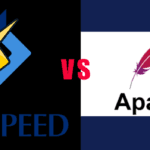Digital product design agency UiTop redesigned the client product. The product works on the US market and aims to simplify and automate the work of insurance agencies.
After cooperation with Excited, the company managed to complete the seed round, attracting $2 million in investment.
Design director and co-founder of the agency, talked about the design of the solution, the cooperation process and the features of the product for the US insurance market.
Our company https://uitop.design/saas-design-services/ started our cooperation with the product, founded in 2017, in the winter of 2020 – on the eve of the pandemic. The product works only in the USA – the insurance market there is very developed. With the help of this product, insurance agencies automate the process of collecting information from the client for insurance.
When taking out insurance, agents fill out a lot of information that affects the price of the policy. The company makes it possible to create a form with all the questions that the client must answer before obtaining insurance. Agencies using the product can easily add this form to their site, where potential customers can answer all the questions themselves and get quotes for auto, home, life or anything else.
The main request from the client at that time was the redesign of one of their products – Customer forms. But we immediately knew that the company had other products that needed to be improved and to which new functionality needed to be added. So we knew that this was potentially a very extensive project. Even during the final phases of the Customer Forms redesign, we agreed on the next stages of work.
Considering that the entire product is a collection of forms of different types and formats, it was very important to optimize all inputs, improve the overall layout, and make everything work perfectly and comfortably on both desktop and mobile devices.
As a result, in the new version of the forms, the user sees one question, but at the same time understands how many of them have already been filled out and how many are left.
Our main strategy for the new form design was:
- make the filling process linear;
- reduce cognitive load by reducing the number of questions that are shown simultaneously;
- create a user experience similar to a conversation with an agent, where the customer simply answers specific questions.

Usability testing
Before submitting the new version to development, we organized usability testing. First, we defined the criteria for our users. We decided to test the form for one of the most popular insurances — car insurance. So, the main criteria for us were: 1) geography of users in the USA (we tried to choose respondents from different states); 2) age 21 — 60; 3) users already have a car and previous experience of purchasing car insurance.
We received several dozen applications from people willing to participate in the testing, and already from them people of different ages, different types of employment, and from different states were chosen.
Next, we created hypotheses, tasks for users, prepared a prototype and invited users to participate.
First of all, we checked:
- will people understand how the navigation between the questions is built
- will understand the difference between single-choice and multiple-choice questions
- will they figure out how to add several drivers and several cars to one insurance.
Additional tasks checked whether it is easy/difficult for users to return to a specific question, whether they understand the difference between the different offers offered by the service, etc. Also, in the process, people were asked how they look for and buy insurance, which companies or marketplaces they use, what this process usually looks like.
The main goal for all users participating in the test was to get a quote for car insurance. We did not have any super conditions: people entered their information as if they were using a real product. To make the prototype look as realistic as possible, we asked each of the participants the day before what brand of car they had. This information was added to the prototype, and as a result, everything worked as close as possible to the real experience.
Prototype
Since our product had a large number of inputs of different types, it was very important to see how people would use them: how they would enter different types of data, and how the process would differ on mobile phones.
We immediately understood that we would create a prototype in Protopie. It was important to have the functionality of real inputs , and then to display all the entered information (name and other personal data of users) in the right places (for example, in the summary before issuing insurance), so that everything was as similar as possible to using a real product.
User search
We have already used the userinterviews.com user recruitment service more than once , so this time we used it for their search and selection. If you are dealing with the US market, highly recommended. Canada, Australia, South Africa and several European countries have now also been added to the list of user geographies.
After eight sessions, we learned several areas that we needed to improve. Key insights: people did not immediately understand how to easily and quickly return to the previous question, it was also difficult to find how to call the Summary section , on some screens, due to their size, it was difficult to find the “Next” button .
Based on the insights, we immediately updated the design after testing and got everything ready for development.
Back office for creating forms, automation and working with sales by our SaaS Design Agency
The next stage, and the biggest (we are still working on this part of the service), was to improve the existing functionality and create new features for the web application, which is actually used by insurance agencies.
One of the most difficult tasks was the design of Form-builder. With the help of this functionality, agencies create their forms, set up integrations with sending data to other systems, and set up the process of automating communication with the client.
The process itself seemed to us to be complex and non-trivial. In addition, our users were not tech-savvy, so the design solution had to be as understandable as possible for the average person.
One of the co-founders of the company is an insurance agent. It was easy and fast for us to get the first feedback on the solutions from him, because he knows the industry thoroughly, and also completely fits the criteria of the end user.
Also very helpful in our process is Tyler, one of the customer support employees on the company side. He is always present on our calls and knows the problems faced by users because he works on ][ solutions every day. So we regularly hear some insights from him.
Through iterations, experiments and feedback from users, we settled on an option where each question had its own settings section and a “live” preview.
The main problem that stopped the growth of the company was the manual onboarding of each client. For each agency, you need to set up a platform, which is a big layer of work. Our new form builder has allowed us to update and speed up onboarding, improve the data mapping process and set up automations. Now the onboarding of a new corporate client takes place almost without involving the support team.
Design system
The company consists of four products: 1) form for customers: 2) form for agents; 3) web application for agencies and 4) marketing site. In order to achieve brand consistency between all products and at the level of components and styles, we have had four design systems from the beginning , the components of which we use in the respective products.
Marketing
The Excited team was closely involved in marketing activities and worked with the company team to design the new site and develop it using Webflow. We also created the design of presentations that the company used during the investment seed round.




